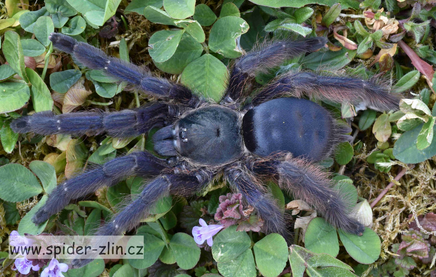
Tapinauchenius violaceus - The Purple Tree Spider
Welcome to the extraordinary world of the Tapinauchenius violaceus, commonly known as the Purple Tree Spider. This stunning tarantula is a testament to the beauty that nature has to offer, with its vibrant hues and agile demeanor. As an arboreal species, the Purple Tree Spider is a sight to behold, gracefully navigating its environment with ease. Let me guide you through the essential care details, interesting facts, and everything you need to know to provide a loving home for this exquisite creature.
Care Details
- Temperature: The ideal temperature range for the Tapinauchenius violaceus is between 75 to 85°F (24 to 29°C). In warmer environments, they tend to eat more, grow faster, and molt more frequently. This adaptability makes caring for them a manageable task.
- Humidity: This species thrives in a humidity level of about 65-75%. Water dishes are not necessary, but if you choose to include one, it will not harm your spider. I personally do not use water dishes for my tarantulas.
- Housing: As an arboreal species, the Tapinauchenius violaceus requires specific housing conditions. For babies, a small vial up to 5 inches tall and 2 inches in diameter with proper ventilation will suffice. We provide these vials free of charge at checkout, but you must request one during the checkout process; otherwise, it will not be included. For juveniles larger than 2 inches, a 7-8 inch tall enclosure is ideal, and for adults, aim for 12 to 16 inches to give them ample space to climb and explore.
Diet
I personally offer a variety of crickets and cockroaches, including Dubia, Red-runner, Lobster, and Madagascar hissing roaches. For the younger Tapinauchenius violaceus, baby crickets and baby roaches are perfect. If you have access to only one type of prey, that is perfectly fine. If you cannot find a small enough cricket or cockroach, simply crush its head and leave it in the enclosure; your tarantula will handle the rest. Remember to remove any uneaten food to prevent mold growth.
In-depth Facts
- Latin name: Tapinauchenius violaceus
- Common name: Purple Tree Spider
- Locale: This species originates from the rainforests of South America, particularly in regions stretching from Trinidad to Brazil.
- Category: Arboreal, moderate webber
- Size: Females and males can reach sizes up to 5 inches. The females tend to be larger and more vividly colored.
- Urticating hairs: They do not possess urticating hairs.
- Growth rate: The Purple Tree Spider is known for its relatively fast growth rate.
- Life span: Females can live up to 12 years, while males have a shorter lifespan.
- Recommended levels: Suitable for all levels of tarantula keepers, given its manageable care requirements.
Stay Connected
- Instagram: Follow my Instagram, I'm most active here.
- YouTube: For care and education videos, check out my YouTube channel.
- Facebook: Over here I have all my reviews.
- TikTok: Visit my TikTok for additional content.
Safety Disclaimer
Experiencing a tarantula bite is an extremely rare occurrence, and it's important to note that there have been no recorded fatalities due to a tarantula bite. The venom potency varies across species, with Old World tarantulas generally having stronger venom than their New World counterparts. Within the Old World category, the Poecilotheria genus is known for having particularly potent venom.
It's crucial to approach tarantulas with respect and understanding. If you happen to get bitten, which is unlikely, the key is to stay calm. In most cases, the discomfort is superficial and subsides within a few minutes to a few hours. However, bites from species with more potent venom may result in symptoms lasting up to a week. Remember, larger tarantulas tend to have more venom than smaller ones.
Please be aware that I cannot assume responsibility for bites. Tarantula handling should be done at your own risk. In my 11 years of experience with these creatures, I have only been bitten once, by a species with highly potent venom. While the experience was painful, the symptoms had completely disappeared after a week.
Handle tarantulas responsibly, and always prioritize your safety and the well-being of the tarantula.